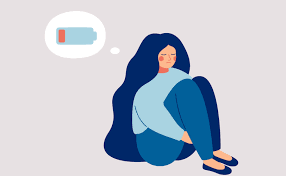Beyond the Winter Blues: What is Seasonal Affective Disorder and How can we Fight It?


The winter months can be tough. The colder weather and shorter days can make normal tasks feel extra difficult during this time. Many people feel like they are running on empty or they might have a hard time participating in the activities they normally enjoy. It could seem even harder to focus on work we need to get done. These all can be symptoms of Seasonal Affective Disorder (SAD), a more intense version of the “Winter Blues,” that can impact our functioning this time of year.
Understanding Seasonal Affective Disorder
Seasonal Affective Disorder is a type of depression that is associated with the season, most commonly winter. It’s very biologically driven, associated with changes in our brains and bodies that occur during winter. Individuals with SAD often experience the onset of symptoms during the fall, as days get shorter and there is less sunlight. The shortening of days and lack of sunlight impact parts of the brain that affect our “sleep-wake cycle”, or circadian rhythm, and our mood. Researchers have even found that levels of melatonin, a hormone associated with our sleep patterns, are associated with SAD symptoms.
Seasonal Affective Disorder, just like other depressive disorders, manifests in a variety of ways, so individuals’ symptoms may vary. Some of the symptoms of SAD include excessive tiredness, increased anxiety and feelings of guilt/hopelessness, decreased ability to focus, social withdrawal and loss of interest in activities you might normally enjoy. Depression is not just sadness that comes and goes, but rather, a shift in overall mood and functioning, which can even include feeling low to no emotion. And just like other forms of depression, SAD can occur on its own, or be triggered by other life events or stressors. .
5 Ways to Combat the Winter Blues
There are many things you can do on your own to help fight off the winter blues or SAD. It all starts by encouraging mental wellness and mindfulness during these tough times.
1. Keep Engaging in Activities You Normally Enjoy
When dealing with depressive symptoms, it can be very easy to avoid participating in our regular activities. To combat SAD, we have to go against our instincts to hibernate and continue to participate and engage in the activities that normally bring us joy. This allows us to counter social withdraw and isolation, and continue to push positive neurochemicals such as endorphins, oxytocin and dopamine.
2. Take Care of Your Physical Wellness
There is a direct link between physical and mental wellness. When our bodies feel good, it helps our minds feel good too. So as the season hits hard, it is important to address both. Some ways to address your physical wellness are eating healthy, well-balanced meals, decreasing use of alcohol and drugs (yes! Including caffeine!), exercising for at least twenty minutes each day, and getting enough sleep. Be sure to attend regular check ups with your primary care physician and follow their recommendations as well.
3. Take Advantage of the Sun When You Can
We feel happier and more focused when we are able to get consistent sunlight, as the sun impacts the parts of the brain that control our mood and circadian rhythm. It is especially helpful to get sun when you wake up in the morning, as this is a great way to jumpstart your body and your day. It can be as simple as a short walk outside in the morning that will leave you feeling more energized and ready for the day. If you see the sun peak out – try to spend time outside or by a bright window. Physicians even prescribe special lights that mimic sunlight (without the skin damage) for SAD patients… ask your primary provider if you think this might benefit you.
4. Talk to Your Family and Friends: You Are Not Alone!
Depression and the winter blues can make us feel very isolated, and often we will isolate ourselves when we are feeling down. Connecting with friends and maintaining an active social life can decrease our risk for social isolation and encourage positive communication. Friends and family want to help us when we are feeling down, but they are not mind readers! By communicating how we are feeling with friends, we are able to receive the social support we need.
5. Seek Treatment As Needed
Don’t wait until things get bad to seek help. If you or a loved one are experiencing symptoms of seasonal affective disorder for a prolonged period of time, reach out to a professional for help. It is better to seek help before crises come up so that we are equipped with the tools to handle hard times before they happen.
Conclusion
Depression is not something we can ‘just snap out of.’ It takes time and effort, and eventually day by day, we begin to feel better. There is relief and there is hope. Reach out today if you or a loved one are experiencing symptoms of Seasonal Affective Disorder and would like to begin treatment.

Recent Comments